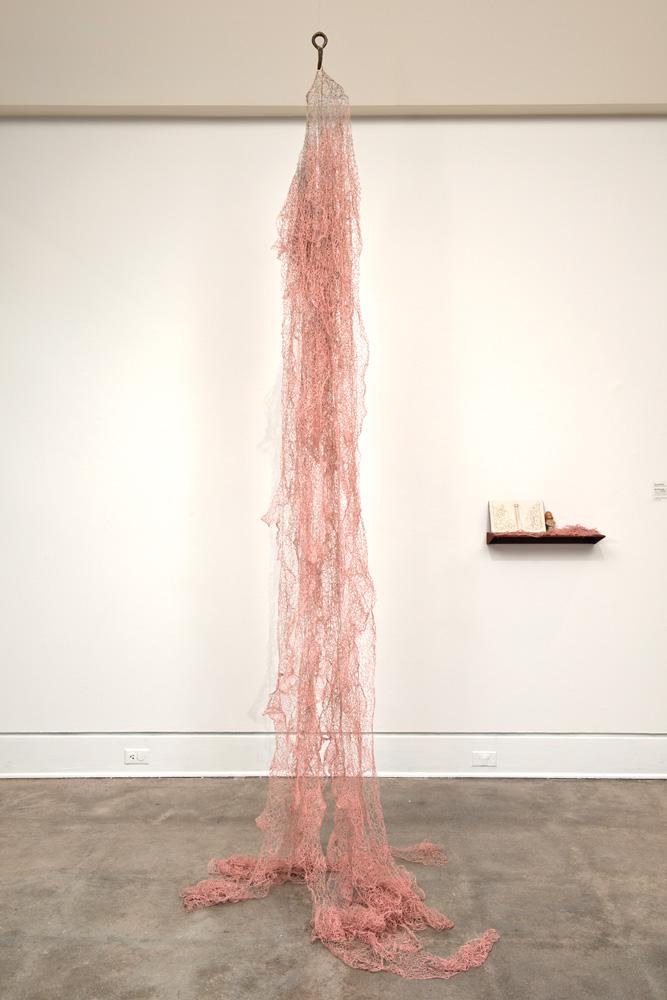One of the first things visitors saw at the Art Gallery of Nova Scotia (AGNS)’s exhibition “Skin: the seduction of surface” were slabs of carefully stitched flank steak, drying and shrinking with age on a dressmaker’s dummy. This was Jana Sterbak’s Vanitas: Flesh Dress for an Albino Anorectic (1987), recreated for the exhibition by an AGNS team using fresh meat. What started as a brilliant blood-red colour looked, a week after the opening, more like darkened old leather. Made with local beef from Nova Scotia’s Annapolis Valley and preserved with 13 kilograms of salt, the macabre dress was viscerally repulsive and impossible to look away from, reminding viewers of the morbid nature of their own appetites—a memento mori, evoking thoughts of the inescapable physicality of death and desire.
For curator Sarah Fillmore, “Skin” was “really about layers of life: scars, protective covering, a surface, a mediator and a conveyor of identity.” It was an exhibition meant to explore “the seduction and sometime revulsion” of covering. Sterbak’s Flesh Dress was among the 52 works included in the show, by artists ranging from David R. Harper to Vito Acconci. Like Flesh Dress, many of the pieces in the exhibition appeared to be organisms in themselves, their narratives constantly evolving and adapting. The Nova Scotia artist Doug Guildford has been working on The Pretty Lady—a meticulously crocheted form hanging from the ceiling—since 2005, often reconfiguring the sculpture with the addition of copper wire. Guildford breathes a skeletal life into the inanimate with The Pretty Lady, a piece that he will perhaps never tire of reinventing. Resembling a magnified web of hollow cells, the Lady hovers like a ghostly memory or fantasy, given the fact that she will never be fully “fleshed out.”
Cora Cluett revelled in a different materiality. Her piece After All—Scavenger’s Daughter (2003) consists of more than 30 layers of oil glazes poured onto a canvas. Puncturing her paintings with bullet hole–like impressions, Cluett reveals the strata of paint lying below the surface. Each mark resembles a cigarette burn: exposed indigo centres surrounded by rings of red paint swelling outward onto the outer “skin” of the canvas. The exhibition as a whole functioned likewise. It forced viewers to pick away at their notions of skin, which the artists presented as a layer forming barriers and gateways between internal and external realms. For them, skin bears the physical scars of contact. It acts as a signifier of the hidden.
This is a review from the Fall 2012 issue of Canadian Art. To read more from this issue, visit its table of contents.









